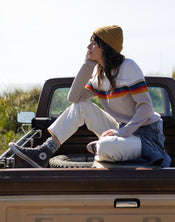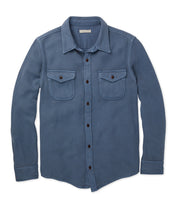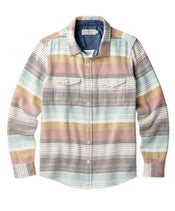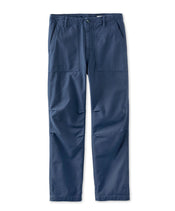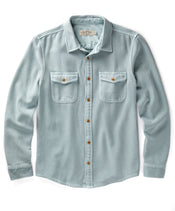Journey
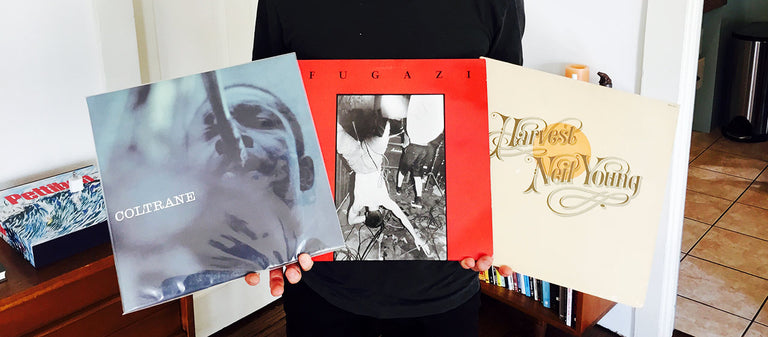
Journey
Bruce Gilbert
 Bruce's top three records. Photos by Jamie Brisick.
Bruce's top three records. Photos by Jamie Brisick.
"At any given time I’m working on three or more shows, plus a movie or two in the background, generally an indie film or a documentary..." - Bruce Gilbert
I first met Bruce Gilbert on the North Shore of Oahu in 2006. He was traveling with Kelly Slater; in fact he’d done much of that year’s tour with Kelly. Bruce had been working as a music supervisor for movie trailers, but he’d hit a kind of ceiling and decided to take some time off. He and Kelly were friends, Kelly invited him along, and also invited him to shoot photos of what would be Kelly’s eighth world title campaign, many of which were featured in the book Kelly Slater: For the Love (see below). Bruce shot a ton of pics and surfed himself senseless (“That was the year of magical living, I surfed all the waves I’d dreamed of surfing!”). When the season finished he returned to Los Angeles and found his way into a working life that is quite magnificent.
Bruce is a music supervisor, which is to say he’s the reason why you get songs stuck in your head from watching TV and movies. Bruce is constantly listening to music. He taps his toes through breakfast and taps his fork and knife through dinner. Here, I’ll let him explain:
“At any given time I’m working on three or more shows, plus a movie or two in the background, generally an indie film or a documentary. My current shows are “Transparent,” on Amazon, and “Orange is the New Black,” on Netflix. I do “Childrens Hospital.” I just finished doing “Wet Hot American Summer,” an eight-episode prequel that aired on Netflix.
My earliest music memories start with Rush. I moved to Toronto, Canada from South Africa in 1976 and was spoon-fed classic rock, thanks to my older brother Craig. Rush played a huge part. And I ended up learning to play the drums when I was about ten years old, so Rush stuck with me for obvious reasons. Later it was Prince and Talking Heads. But songs and records that fucked me up? “Waiting Room” by Fugazi. The first time I heard that song I felt like it changed things. Bad Brains “I Against I.” Neil Young “Harvest.” And the first Coltrane Quartet album—that broke my brain. Elvin Jones plays drums on it—he’s like my spirit guide.
As far as putting music to scenes goes, I used to think music was doing its finest work when you were feeling a certain way but weren’t necessarily noticing the music. It was featured but it wasn’t drawing attention to itself, but it affected the overall emotion of the scene. So I feel like that is how score should operate. But then when I’m finding songs for a montage where the music features strongly, maybe vocals and lyrics, or maybe punctuating an episode with a big musical number, or a big musical idea, then I think it’s the exact opposite. Then the music becomes really conspicuous. You’re asking the audience to join you in celebrating a scene, or asking a question about what they just encountered.
 Bruce's images from a year of traveling with Kelly: Kelly on the Uke; A flight from London to Paris; A board Bruce designed for Kelly; Kelly and Eddie on the North Shore.
Bruce's images from a year of traveling with Kelly: Kelly on the Uke; A flight from London to Paris; A board Bruce designed for Kelly; Kelly and Eddie on the North Shore.
"I listen to music all day. Each song passes through whatever particular filter I have engaged." - Bruce Gilbert
I listen to music all day. Each song passes through whatever particular filter I have engaged. My brain is compartmentalized in such a way that when I hear a song it sort of falls into a bin for one of the projects I’m working on. It’s good and bad. As a music freak, I don’t get to hear music just as music anymore. I’m always hearing stuff that I think I want to revisit at some point for a future project. So I’m on a steady diet of every possible thing I can jam into my ears. We’re living in a time when it’s never been easier to find music, but there’s never been more music to choose from. It’s tricky. I used to be worried that there was a perfect, perfect, perfect song and I didn’t know it. And then I had to let that go and settle into the idea that I could only draw from the music that I knew, and that that was good enough. Kelly once told me that he thought there was a perfect line to riding a wave. The idea that there is the truest way to something, and that you have access to it is a lovely pursuit.”
An exclusive playlist from Bruce:
Comfy In Nautica - Panda Bear
Journey in Satchidananda - Alice Coltrane, Pharoah Sanders
Dark Days (Main Theme) - DJ Shadow
Holy Thursday - David Axelrod
Arhegh Danagh - Tinariwen
Goatchild - Goat
Heart - Darkside
Radiate - The Chemical Brothers
Leb'Wohl - NEU!

Jamie Brisick is a writer, photographer, and director. He surfed on the ASP world tour from 1986 to 1991. He has since documented surf culture extensively. His books include Becoming Westerly: Surf Champion Peter Drouyn’s Transformation into Westerly Windina, Roman & Williams: Things We Made, We Approach Our Martinis With Such High Expectations, Have Board, Will Travel: The Definitive History of Surf, Skate, and Snow, and The Eighties at Echo Beach. His writings and photographs have appeared in The Surfer’s Journal, The New York Times, and The Guardian. He was the editor of Surfing magazine from 1998-2000, and is presently the global editor of Huck. In 2008 he was awarded a Fulbright Fellowship. He lives in Los Angeles. For more of his work check out http://jamiebrisick.com & @jamiebrisick
Bruce's top three records. Photos by Jamie Brisick.
"At any given time I’m working on three or more shows, plus a movie or two in the background, generally an indie film or a documentary..." - Bruce Gilbert
I first met Bruce Gilbert on the North Shore of Oahu in 2006. He was traveling with Kelly Slater; in fact he’d done much of that year’s tour with Kelly. Bruce had been working as a music supervisor for movie trailers, but he’d hit a kind of ceiling and decided to take some time off. He and Kelly were friends, Kelly invited him along, and also invited him to shoot photos of what would be Kelly’s eighth world title campaign, many of which were featured in the book Kelly Slater: For the Love (see below). Bruce shot a ton of pics and surfed himself senseless (“That was the year of magical living, I surfed all the waves I’d dreamed of surfing!”). When the season finished he returned to Los Angeles and found his way into a working life that is quite magnificent.
Bruce is a music supervisor, which is to say he’s the reason why you get songs stuck in your head from watching TV and movies. Bruce is constantly listening to music. He taps his toes through breakfast and taps his fork and knife through dinner. Here, I’ll let him explain:
“At any given time I’m working on three or more shows, plus a movie or two in the background, generally an indie film or a documentary. My current shows are “Transparent,” on Amazon, and “Orange is the New Black,” on Netflix. I do “Childrens Hospital.” I just finished doing “Wet Hot American Summer,” an eight-episode prequel that aired on Netflix.
My earliest music memories start with Rush. I moved to Toronto, Canada from South Africa in 1976 and was spoon-fed classic rock, thanks to my older brother Craig. Rush played a huge part. And I ended up learning to play the drums when I was about ten years old, so Rush stuck with me for obvious reasons. Later it was Prince and Talking Heads. But songs and records that fucked me up? “Waiting Room” by Fugazi. The first time I heard that song I felt like it changed things. Bad Brains “I Against I.” Neil Young “Harvest.” And the first Coltrane Quartet album—that broke my brain. Elvin Jones plays drums on it—he’s like my spirit guide.
As far as putting music to scenes goes, I used to think music was doing its finest work when you were feeling a certain way but weren’t necessarily noticing the music. It was featured but it wasn’t drawing attention to itself, but it affected the overall emotion of the scene. So I feel like that is how score should operate. But then when I’m finding songs for a montage where the music features strongly, maybe vocals and lyrics, or maybe punctuating an episode with a big musical number, or a big musical idea, then I think it’s the exact opposite. Then the music becomes really conspicuous. You’re asking the audience to join you in celebrating a scene, or asking a question about what they just encountered.

Bruce's images from a year of traveling with Kelly: Kelly on the Uke; A flight from London to Paris; A board Bruce designed for Kelly; Kelly and Eddie on the North Shore.
"I listen to music all day. Each song passes through whatever particular filter I have engaged." - Bruce Gilbert
I listen to music all day. Each song passes through whatever particular filter I have engaged. My brain is compartmentalized in such a way that when I hear a song it sort of falls into a bin for one of the projects I’m working on. It’s good and bad. As a music freak, I don’t get to hear music just as music anymore. I’m always hearing stuff that I think I want to revisit at some point for a future project. So I’m on a steady diet of every possible thing I can jam into my ears. We’re living in a time when it’s never been easier to find music, but there’s never been more music to choose from. It’s tricky. I used to be worried that there was a perfect, perfect, perfect song and I didn’t know it. And then I had to let that go and settle into the idea that I could only draw from the music that I knew, and that that was good enough. Kelly once told me that he thought there was a perfect line to riding a wave. The idea that there is the truest way to something, and that you have access to it is a lovely pursuit.”
An exclusive playlist from Bruce:
Comfy In Nautica - Panda Bear
Journey in Satchidananda - Alice Coltrane, Pharoah Sanders
Dark Days (Main Theme) - DJ Shadow
Holy Thursday - David Axelrod
Arhegh Danagh - Tinariwen
Goatchild - Goat
Heart - Darkside
Radiate - The Chemical Brothers
Leb'Wohl - NEU!

